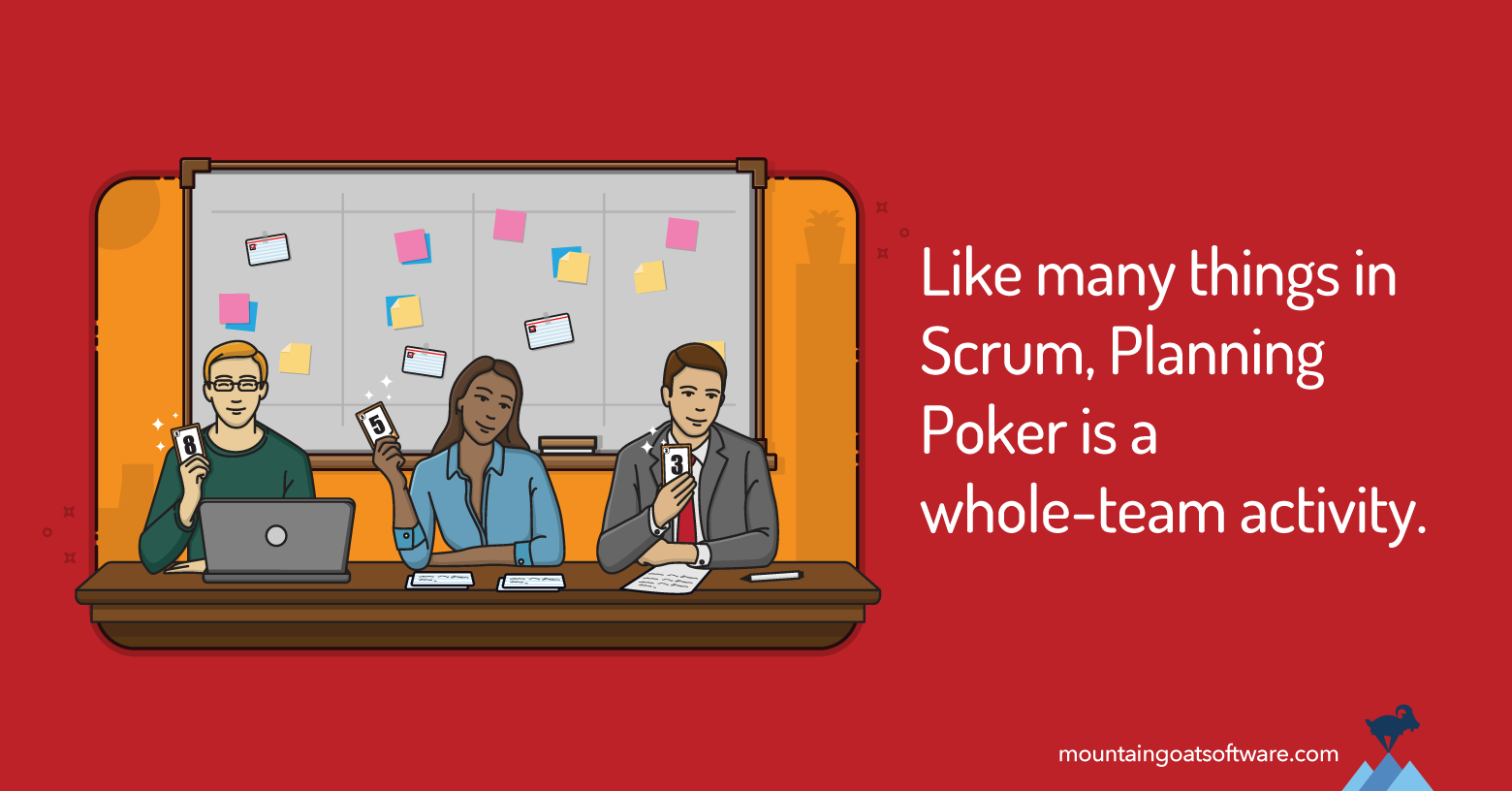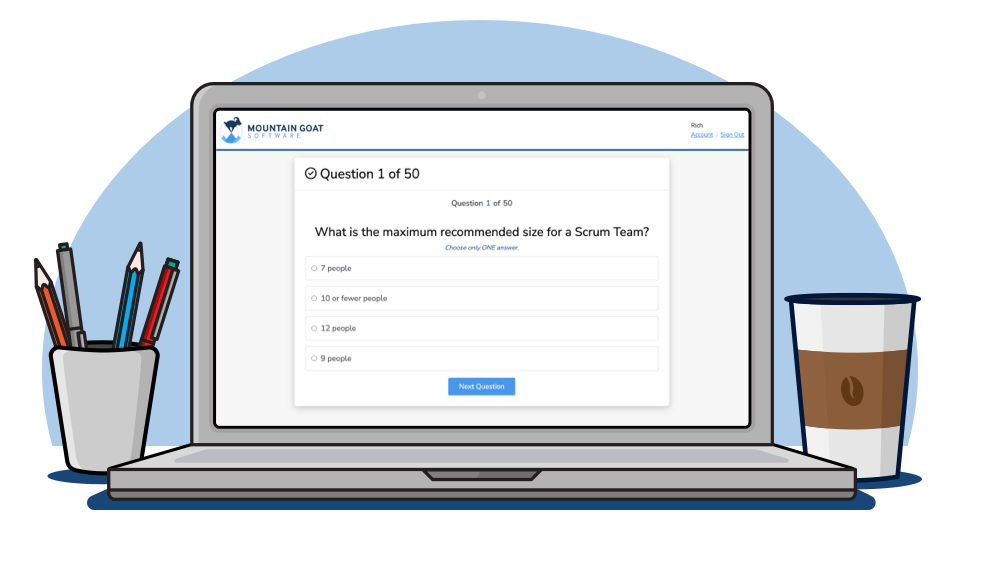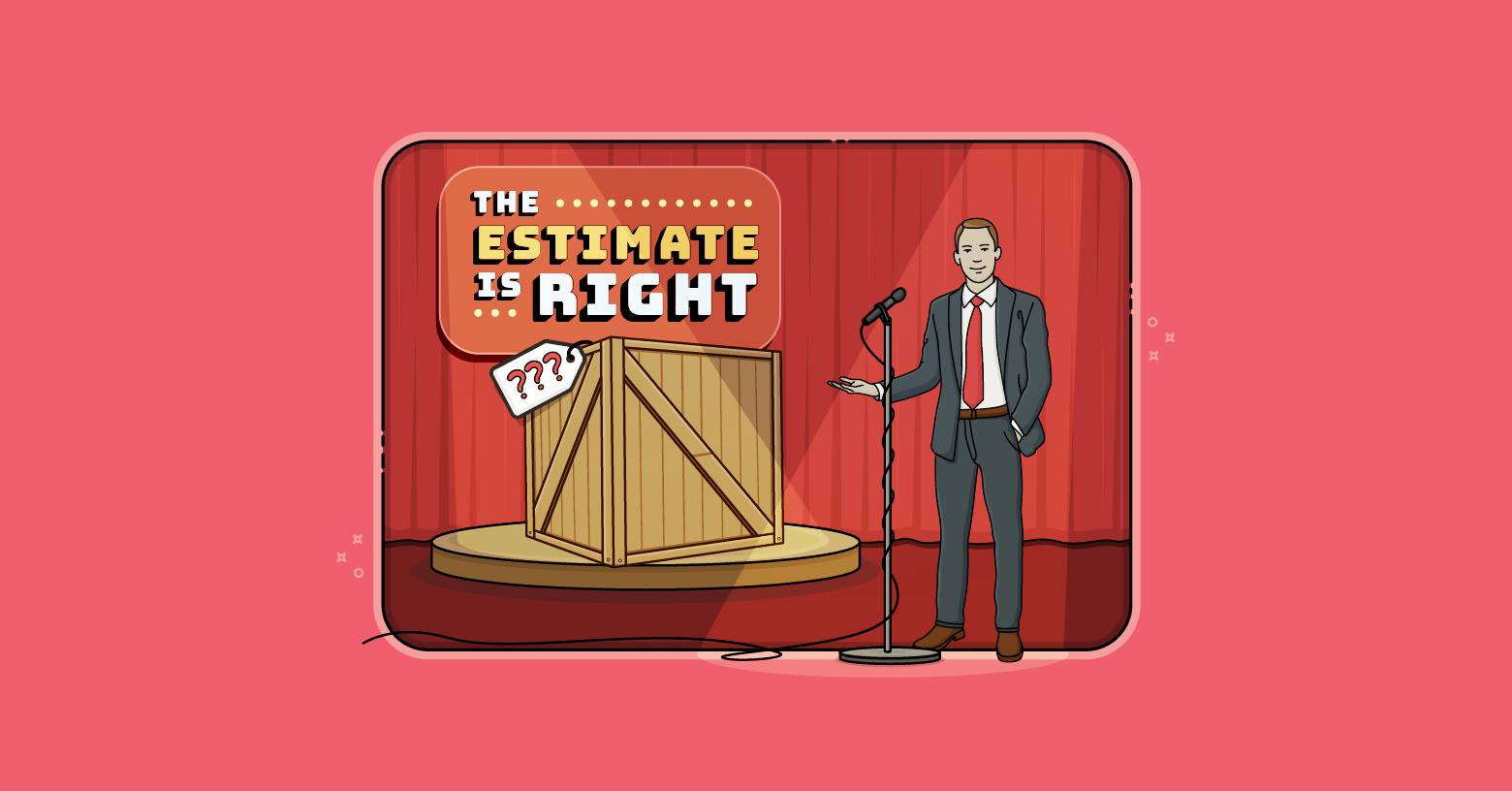When estimating your product backlog with Planning Poker, it’s important to have the right people participate. Let’s go over who needs to be there, and what the job of each is during an agile estimating meeting.
First, of course, we start with the team. All of a Scrum team’s members should be present when playing Planning Poker. You may be tempted to estimate without the individuals in some role—don’t.
An estimate put on a product backlog item (most frequently a user story) needs to represent the total effort to deliver that item. It’s not an estimate of all the work except database changes or all the work except testing.
Those individuals need to be there because they’re needed to deliver many of the product backlog items. They’re also there because they will often have something to contribute to discussions of work they may not directly be involved in.
I’ve seen many examples when a comment by a tester about his or her own work made a programmer realize he overlooked something in his own work.
Programmers are, of course, the best at estimating programming work. And testers are best at estimating testing, and so on. But that doesn’t mean someone with a specialty in one skill won’t have something to add in a discussion about something that will be done by someone else.
Also in a Planning Poker meeting will be the ScrumMaster. A team’s ScrumMaster is its facilitator, and so the ScrumMaster should participate in all regularly scheduled meetings, and a Planning Poker session is no exception.
But should the ScrumMaster estimate alongside the rest of the team? If the ScrumMaster is also a technical contributor such as a programmer, tester, designer, analyst, DBA, etc., then definitely.
By right of contributing in that way, the ScrumMaster holds up a Planning Poker card just like the others.
However, a pure ScrumMaster should estimate only by invitation of the rest of the team. If the others say, “Hey, we have to estimate, why don’t you?” then the ScrumMaster holds up a card each round.
A ScrumMaster who has a solid technical background (in any role) will be especially likely to estimate along with the others.
That brings us to the product owner—and, yes, by all means the product owner needs to be present during any Planning Poker estimating session. The product owner describes each item to the team before they estimate it.
Also, team members will have questions—“what should we do if … ?” “What if the user does … ?”—and the product owner needs to be present to answer those questions.
Product owners, however, generally do not hold up cards during Planning Poker sessions. However, my official answer is the same as for the ScrumMaster: if the team invites the product owner to estimate, the product owner should do so. This is pretty rare, though, and it’s far more common for a ScrumMaster to be invited to estimate.
So, like many things in Scrum, Planning Poker is a whole-team activity.
Last update: May 19th, 2022









